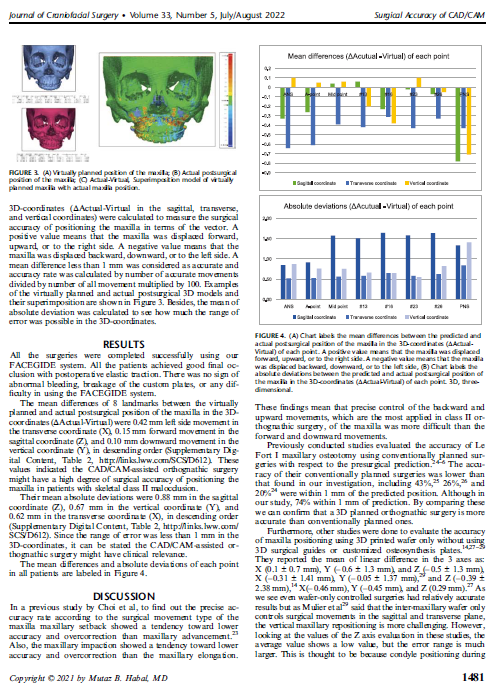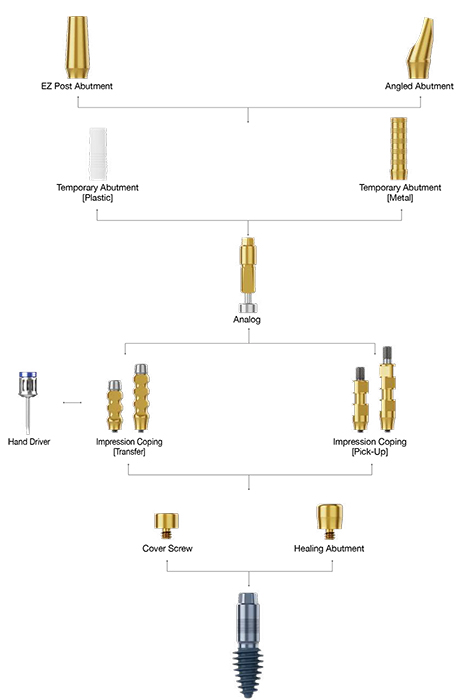Surgical Accuracy of Positioning the Maxilla in Patients With Skeletal Class II Malocclusion Using Computer-Aided Design and Computer-Aided Manufacturing-Assisted Orthognathic Surgery
English 2022-08-25 PDF Lecture 386
Author
마케팅
Date
August 25, 2022
Objective: To evaluate the surgical accuracy of positioning the
maxilla in patients with skeletal class II malocclusion using
computer-aided design and computer-aided manufacturing
(CAD/ CAM)-assisted orthognathic surgery.
Materials and Methods: The samples consisted of 10 patients
with skeletal class II malocclusion, whose cone-beam computed
tomographys taken before and immediately after surgery were
available and who underwent bimaxillary orthognathic surgery
by a single surgeon using Le Fort I osteotomy and bilateral
sagittal split ramus osteotomy at the Department of Oral and
Maxillofacial Surgery, Seoul National University Dental Hospital,
Seoul, South Korea between January 2018 and December
2019. After virtual surgical planning was performed using the
FACEGIDE system (Korea), surgical cutting guides, intermediate
splints, and custom-made titanium mini-plates were
fabricated using CAD/CAM technique. Using 8 landmarks
(anterior nasal spine, point A, #16, #13, contact point between
#11 and #21, #23, #26, posterior nasal spine), the mean differences
between the virtually planned (Virtual) and actual
postsurgical position of the maxilla (Actual) in the three-dimensional
coordinates (ΔActual-Virtual) and their mean absolute
deviations were investigated.
Results: The mean differences of 8 landmarks were 0.42 mm left
side movement in the transverse coordinate, 0.15 mm forward
movement in the sagittal coordinate and 0.10 mm downward
movement in the vertical coordinate. Their mean absolute deviations
were 0.98, 0.67, and 0.62 mm in the sagittal, vertical,
and transverse coordinates, respectively.
Conclusions: Since the mean difference was less than 0.5 mm
and the range of error was less than 1.0 mm, CAD/CAM-assisted
orthognathic surgery might have a high degree of surgical
accuracy and clinical relevance in the positioning of the maxilla.
Key Words: CAD/CAM technology, skeletal class II, surgical
accuracy















